Market Recap for Friday, August 3, 2018
The stock market has clearly turned more defensive over the past 2-3 months and Friday was another perfect example of that. The more aggressive small cap Russell 2000 was the laggard, dropping 0.52%. Meanwhile, the NASDAQ produced only a minor 0.12% gain. The Dow Jones and S&P 500, however, were higher by 0.54% and 0.46%, respectively.
Consumer staples (XLP, +1.17%) and utilities (XLU, +1.12%) were the sector leaders. The XLP has been notably strong this summer and its chart reflects that:
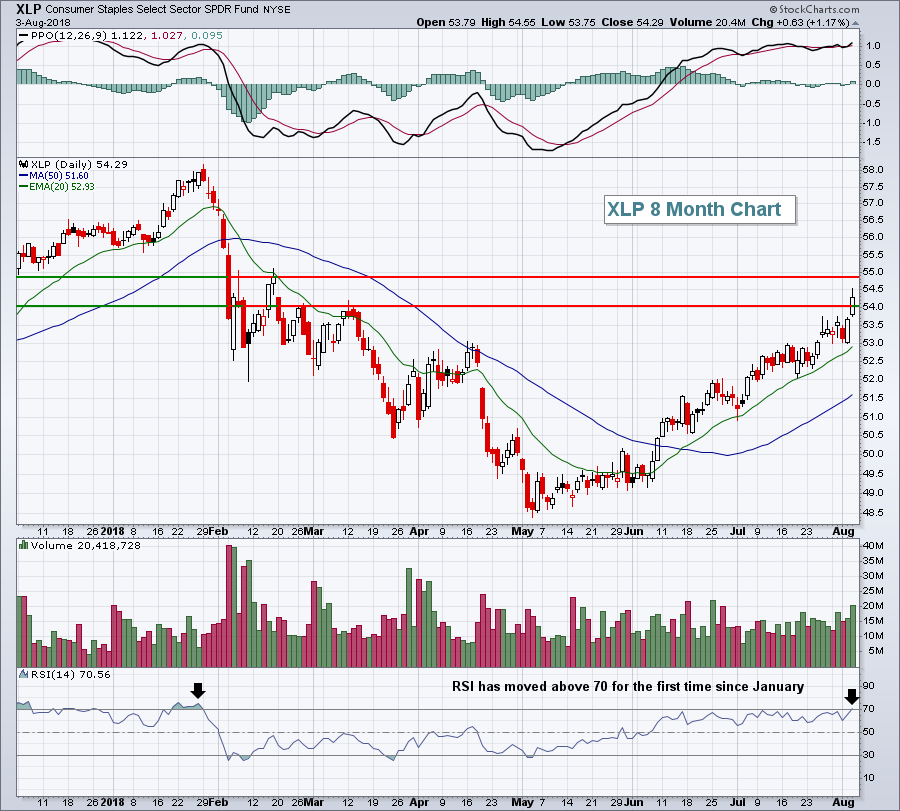 The XLP has been in a steady advance since its early May low and is now challenging the price resistance established on the reaction highs in February and March.
The XLP has been in a steady advance since its early May low and is now challenging the price resistance established on the reaction highs in February and March.
The Dow Jones U.S. Food Products Index ($DJUSFP) rose 2.61% and broke out above key short-term price resistance to lead the staples group:
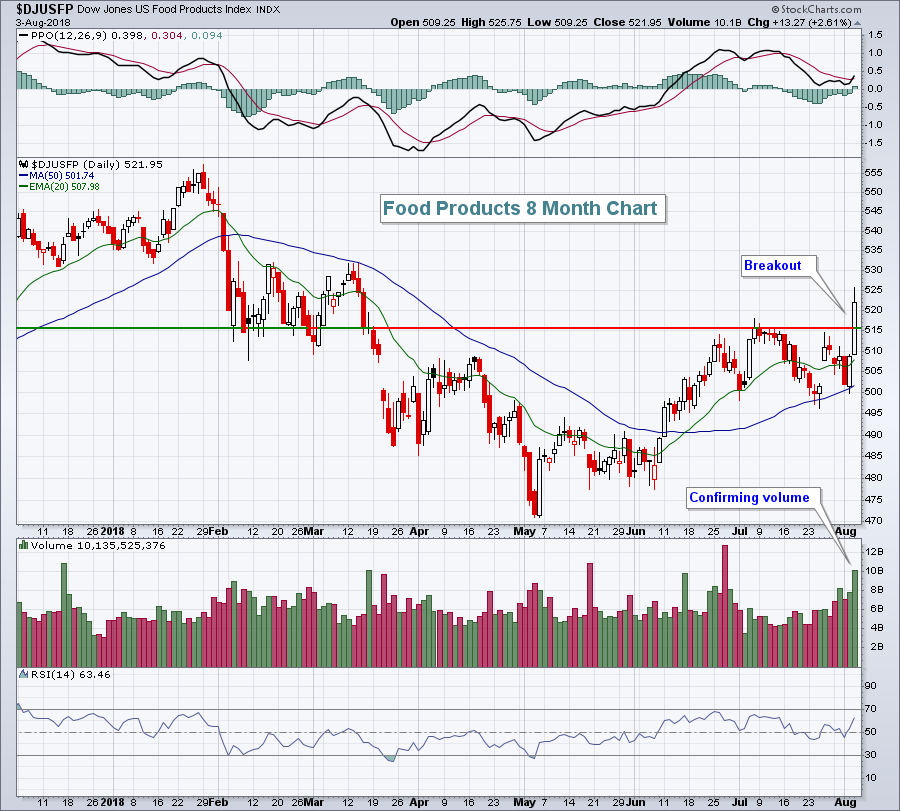 Kraft Heinz Co (KHC) surged 8.55% after posting solid quarterly revenue and earnings results that beat Wall Street consensus estimates to help provide the boost in consumer staples generally and food products in particular.
Kraft Heinz Co (KHC) surged 8.55% after posting solid quarterly revenue and earnings results that beat Wall Street consensus estimates to help provide the boost in consumer staples generally and food products in particular.
Pre-Market Action
The 10 year treasury yield ($TNX) is down very slightly this morning despite JP Morgan CEO's Jamie Dimon's claim that the TNX could hit 5%, saying it's a "higher probability than most people think". The U.S. Dollar Index ($USD) is strengthening and that has sent gold ($GOLD) down $7 to $1216 per ounce.
Asian market were mixed overnight, while European markets are fractionally lower. Dow Jones futures are pointing to a slight loss at today's open.
Current Outlook
The trading range in the very near-term has been firmly established as follows:
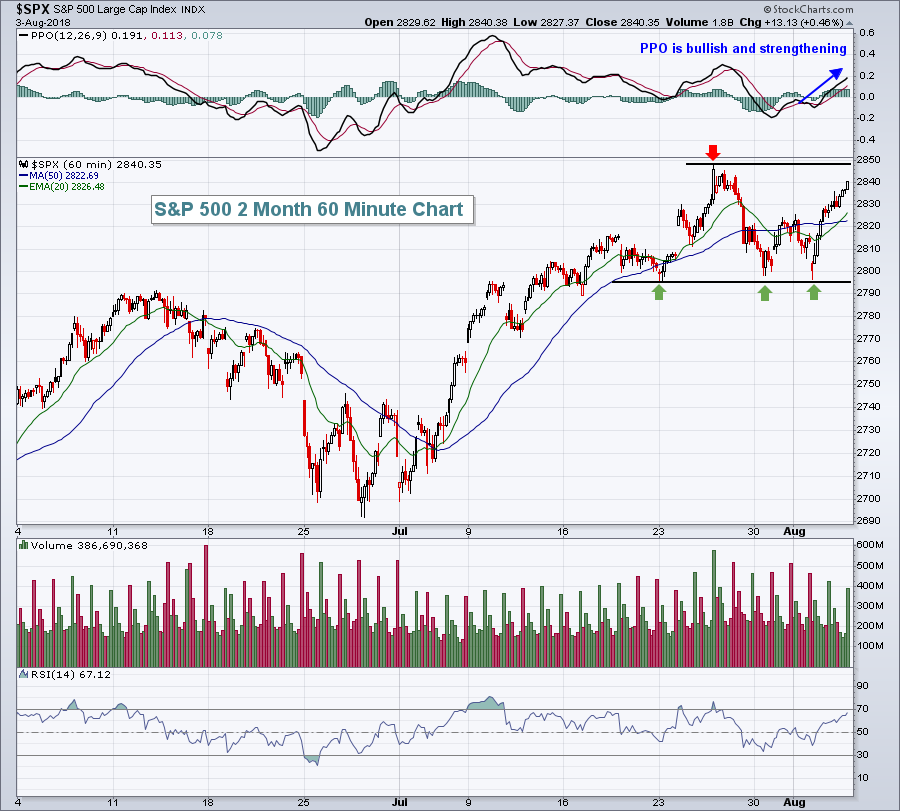 The S&P 500 has held price support in the 2795-2800 area on a few occasions over the past three weeks with the most recent high near 2850 as the clear price resistance level.
The S&P 500 has held price support in the 2795-2800 area on a few occasions over the past three weeks with the most recent high near 2850 as the clear price resistance level.
Sector/Industry Watch
The direction of the U.S. Dollar Index ($USD) has implications for many areas of the market, particularly commodities ($CRB) and the small cap Russell 2000's relative performance vs. the benchmark S&P 500. After breaking to a new high in June, we've seen a few tests of that resistance level without a breakout:
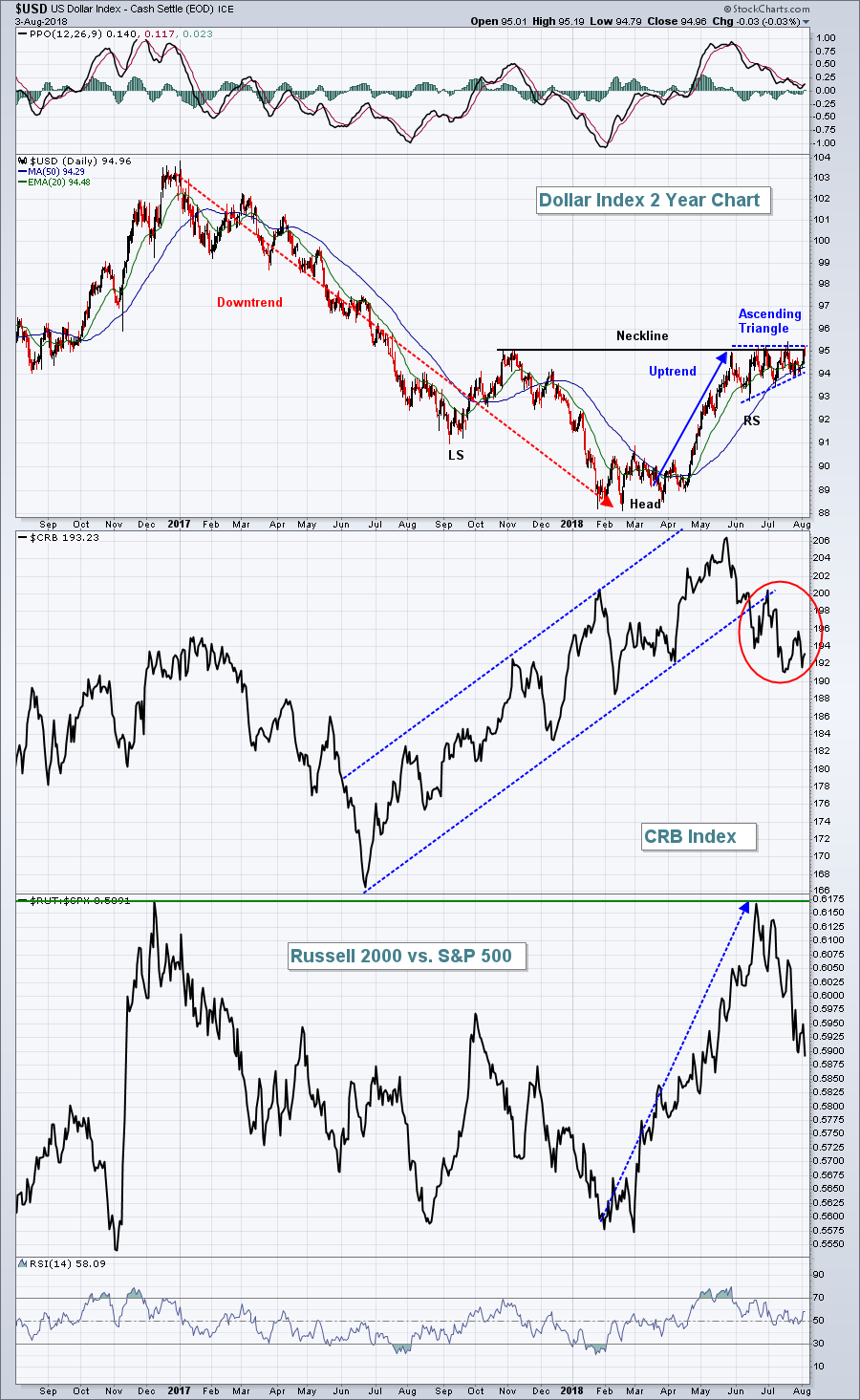 In the very short-term, it appears that the USD is consolidating in a bullish ascending triangle pattern. From a more intermediate-term perspective, that same resistance level represents a reverse neckline in a potential bottoming head & shoulders pattern. A breakout would likely put more downward pressure on the CRB index, while likely setting up a relative reversal for small cap stocks.
In the very short-term, it appears that the USD is consolidating in a bullish ascending triangle pattern. From a more intermediate-term perspective, that same resistance level represents a reverse neckline in a potential bottoming head & shoulders pattern. A breakout would likely put more downward pressure on the CRB index, while likely setting up a relative reversal for small cap stocks.
Monday Setups
Accenture (ACN) has struggled the past 2-3 weeks and now sports an RSI reading of 41, normally a solid reading in an uptrending stock for entry. Check out the current channel and key support and resistance:
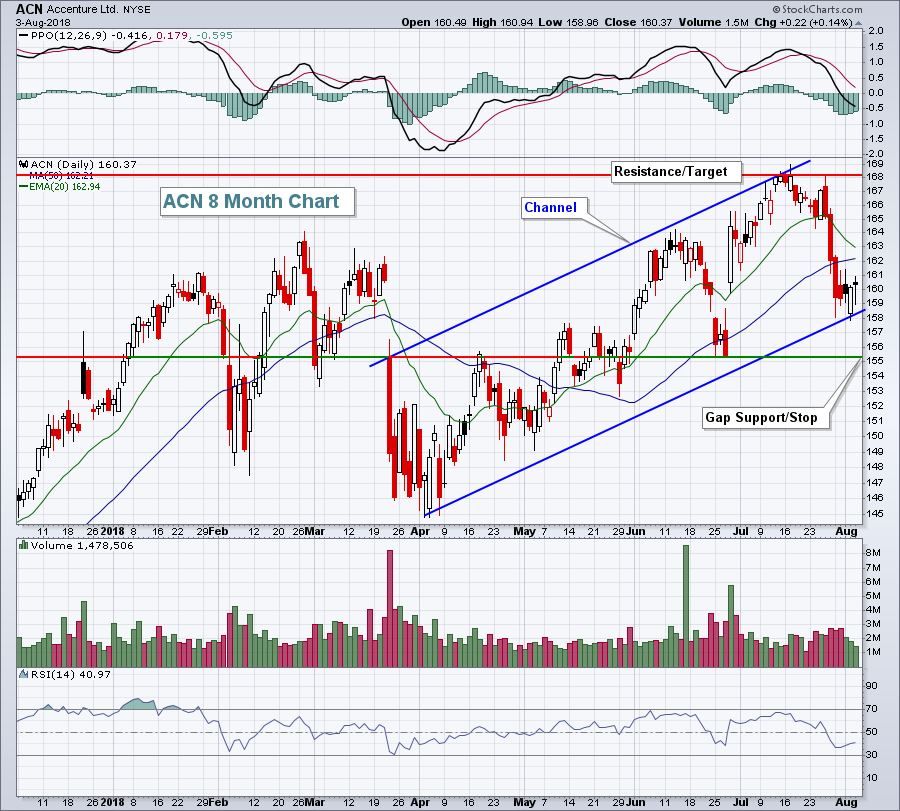 Best reward to risk entry is from 156-158. Consider keeping a closing stop below 155 with an eventual target of 168 to test July's high.
Best reward to risk entry is from 156-158. Consider keeping a closing stop below 155 with an eventual target of 168 to test July's high.
Historical Tendencies
Mondays have historically been the worst calendar day of the week. Since 1950 on the S&P 500, Mondays have produced annualized returns of approximately -15%.
Key Earnings Reports
(actual vs. estimate)
CAH: 1.01 vs .93
HSIC: 1.04 vs 1.02
JEC: 1.35 vs 1.19
NWL: .82 vs .78
SRE: 1.35 vs 1.17
TSN: 1.50 vs 1.33
VST: .20 vs .10
(reports after close, estimate provided)
ANDV: 2.96
ANSS: 1.05
MAR: 1.36
MOS: .39
Z: .08
ZG: .09
Key Economic Reports
None
Happy trading!
Tom






